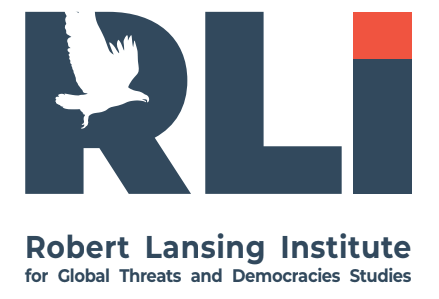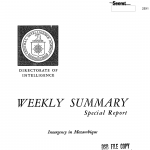Siberia is one Russia’s remote regions with the largest nature’s endowments. Its poor development, economic attractiveness and rising nationalism among core ethnic groups favor separatism.
Siberian economic separatism
Siberia is mentally both Russia and not. The region took off in the late 18th century, while some of today’s constituent regions, such as Tuva, came under the Kremlin’s hand not until the mid-1900s. Russians in Siberia are not like Russians in Russia’s European part. The ethnonym “Siberians” features clear mental content.
These people are generally thought to be harsh and independent, picky about the authorities and tending to solve their problems on their own. That was mainly favored by nature: Siberia features harsh climate and has long been at the frontier (with some parts until now). The second reason: ins and outs of regional settlement. The local sub-ethnos was formed by the Cossacks, political and criminal prisoners, forcibly displaced people from other parts of Russia, the Old Believers (one of the Orthodox groups, forced to settle in hard-to-reach places after the church reform, over the persecution by the government), who actively mixed with the locals – Yakuts, Buryats and small peoples of the North. Those people dimly identified themselves with central Russia and pulled more and more away from it with each generation.
That is why separatist ideas not of ethnic nature gain traction in Siberia. Ethnic Russians not identifying themselves in a single cultural and mental framework with those in Russia’s European part, often advocate for granting independence to Siberia in various formats (the Siberian Republic, the Yenisei Republic, the Baikal-Amur Democratic Republic).
There were numerous attempts to align the Siberian dialect of Russian, and even attempts to compile dictionaries. The topic of Siberian autonomy, independence or Siberia-Russia confederation has clear economic roots for the past 20 years. We believe it is backed by some regional elites who see the autonomy or independence as another way to strike it rich.
The Siberian Federal District, comprising four republics, three territories, and five regions, is endowed with 85% of the all-Russian reserves of lead and platinum, 80% of coal and molybdenum, 71% of nickel, 69% of copper, 44% of silver, 40% of gold. Such wealth is whetting appetites by both local elites and geo-economic players, particularly China. It is widely believed by the people that Siberia feeds the rest of Russia and gets little in return.
It is of interest to note that Russia’s statistics does not rank Siberia among the main donors for the economy. Its share in the country’s economy has been declining since Soviet times. The aggregate “contribution” by all regions of the Siberian FD to the federal budget is 8.4%, with the Krasnoyarsk Territory having the largest share, and, say, Tuva, being subsidized. The region, meanwhile, features extremely high off-the-books employment, twice exceeding the all-Russian indicator for individual subjects of the federation.
The federal center is powerless to maintain and develop industrial and social infrastructure in most Siberia’s populated localities. If the Kremlin succeeded in stepping up its presence in Soviet days due to military units and facilities, as well as extensive non-market resource utilization, including the work force by prisoners, then it’s failing today. The infrastructure in most parts of Siberia is in extreme need, therefore. This triggers a so-called “western drift” of migration, resulting in 2 million people having already left Siberia and the Far East for the west of Russia over the past two decades.
Such environment adds to separatist trends. The Kremlin is like a feckless manager for the locals who feel their geographic and mental diversity, that is failing to provide the appropriate living standards for implicitly the richest region of Eurasia.
These sentiments will rise year by year, as the living standards and the population will decrease, and the ways of developing the resources available will be more and more destructive and unsustainable. The next global separatist project in Siberia is quite likely to be backed from outside, with concurrent rise of national separatism in Sakha, Tuva, the Republic of Altai and Buryatia.
National separatism in Siberia’s regional areas
National separatism in four regions of Siberia is steadily trending upward. The reasons for that are:
First, – the Russian chauvinism of the 20th century – the beginning of the 21st century. While developing Siberia, most Russians looked down their nose at indigenous peoples. And in Soviet times, meanwhile, in the second half of the 20th century, it was not just in everyday life, but at the national level as well. As a result, starting in the late 1980s, with the Kremlin losing its presence in the region, the pendulum of interethnic relations swung the other way. The interethnic clashes started at homes. The sense of national identity grew in the locals in direct proportion to the previous pressure. Being like representatives of the titular nation was not a social mainstream any longer. This is especially noticeable in Tuva and Sakha. The clashes take place even over language identification. In Sakha, for instance, the indigenous people from the remote parts of the republic are outspokenly critical of those Yakuts who call themselves “Yakuts” in Russian, and not by the self-name “Sakha”.
Russians were “driven out” of leadership posts, there was ethnic segregation in the social sphere. The developments reached their height in Tuva, marked, inter alia, by the highest level of nepotism and clan system.
Second, – the outflow by the Russians to the European part and large cities over the Kremlin’s policy. Fall of living standards, closing enterprises and running down military facilities resulted in a situation where lots of Russians left the region, thus adding to demographic imbalance. The number of ethnic Tuvans, for example, among the population of the republic has increased by 20% since 1989 and is 84%. The number of Russians, in turn, decreased twice at the beginning of the 1920s and amounted to 16%. There are no official data today, but local demographers claim the number of ethnic Russians is no more than 8%. There is no Russian ethnos in some areas at all, while the birth rate among the locals is concurrently rising. This scenario is typical for other regions as well. In the Altai Republic from 1979 to 2010, for example, the number of Altai increased by 5%, Kazakhs – by 1.2%, while the Russians decreased by 6%. In the Sakha, since 1989, the number of Yakuts has increased by 17%, while the number of Russians has decreased by 12.5%.
Third, – a change of elites and national consciousness raising. Two previous factors have triggered national consciousness raising in the regions. The change of elites is the most striking in Buryatia, Tuva and Sakha. Local political leaders, for instance, use the ideas of Buryat nationalism. Election campaigns are featuring the slogans “Think like the Buryats!”, “Buryatia above all!” The politicians frame the ideas of separatism as anti-colonial movement, where Russia acts as a colonial power.
Local languages (Tuvan, Yakut, Buryat) are proactively introduced everywhere. Russians often complain there is no access to education in Russian in the regions. A “squeeze out” of Orthodoxy, bound up in Moscow and forcibly implanted by the center for a long time, is a separate issue. Tengrianism (the cult of the sky, widespread among the Turkic peoples) is gaining popularity in Buryatia, and Buddhism is stepping up as well. Shamanism has actually become a monopoly in Tuva, and the Supreme Shaman of Tuva is very high in the social scale.
Fourth, – most of young people are focused on the national idea and sometimes separatism. Public anger by the youth swells, as local elites boost the languages and culture by the titular nations of federal constituency, the birth rate of ethnic Russians is falling, while that of the titular nations is raising, and social and economic well-being is coming down. Independence or extension of power for some republics, in this context, looks like the simplest and most logical solution for this social group. That is why national consciousness and separatist ideas gain popularity among the youth. There are a lot of groups on the Web bouncing such ideas. These developments are rather dangerous for the Kremlin, with delayed effect.
Fifth, – enhanced cooperation with neighboring countries of Asia. The potential stakeholders for national separatism boost in the region are China, South Korea and Japan. We are talking about the possibility to gain control over the regional nature’s endowments. The share of mineral reserves of the Republic of Sakha in Russia’s mineral raw material potential is: diamonds – 82%, gold – 17%, uranium – 61%, antimony – 82%, iron ores – 5%, coal – 5 %, tin – 28%, mercury – 8%. There are significant reserves of rare earth metals, silver, lead, zinc, tungsten. There are 58 types of mineral raw materials in 1823 deposits, including 455 deposits of common minerals. The distributed mineral resources recorded by the state balance include: 93% – uranium, 58% – natural gas, 97% – oil, 81% – diamonds, 86% – gold, 87% – antimony, 26% – coal. Buryatia and neighboring regions, with high percentage of the Buryats, is rich in minerals as well. It is also important to note considerable freshwater resources in these areas.
Meanwhile, the attitude on neighboring nations among nationalist-minded groups is different. As for the Chinese, it is mostly negative. The Turkic peoples are critical of China’s policy on the Uighurs. Moreover, China is notorious for its destructive use of natural resources. But ordinary people think positive of China, at the same time.
The attitude on South Korea, seeking to establish social and economic ties with the region, is more friendly. That is particularly true for Buryatia. Here, they use the legend about the Baikal region as the ancestral home for the Koreans and, therefore, their connection to the Buryats (the name of the ancient Korean tribe Buyo is consonant to the word Buryat).
Nationalists are more friendly to Japan as well. Japan, through its embassy, arranges visits to Siberia for the people coming out flat for Pan-Mongolism, that is, to “unify Mongolia”, separating Buryatia and other territories of Transbaikal from Russia, and Inner Mongolia from China, with their subsequent joining Mongolia targeting to establish a large state of Mongols in Central Asia.
There is no system policy by the Kremlin as for the separatism in the region. Moscow understands it is unable to pursue social and economic policy in the region by its current means, and that is the main driver for separatism. The Kremlin, therefore, practically withdrew from solving the problem, settling with pinpoint activity:
– attempts to implant ethnic Russians into local elites. The strategy does not give rise to positive results. Russians find their way into alien environment and are not in the driver’s seat;
– making criminal cases for separatism, particularly among the youth and attempts to put down separatist propaganda on the Internet. Such strategy is pinpoint and often turns vice versa – the target group becomes radicalized;
– local statutory regulations contradicting Russia’s Constitution are eliminated (Sakha and Tuva);
– attempts to infiltrate the natives of “troubled” republics into all-Russia’s political framework and use them in the fight against separatism. Defense Minister Sergei Shoigu is the most striking example. Aspects of his personality cult can be found in his native Tuva. Such tactics does not yield the full-scale outcome, as the federal center does not handle the situation in the republic anyway.
We believe the development of separatism in Siberia will boost over:
– social and economic downturn in the regions;
– generational change and new generations being focused on national projects;
– further outflow by Russians from the national republics and surge of the locals;
– expansion by neighboring countries in Siberia as Russia is waning.




